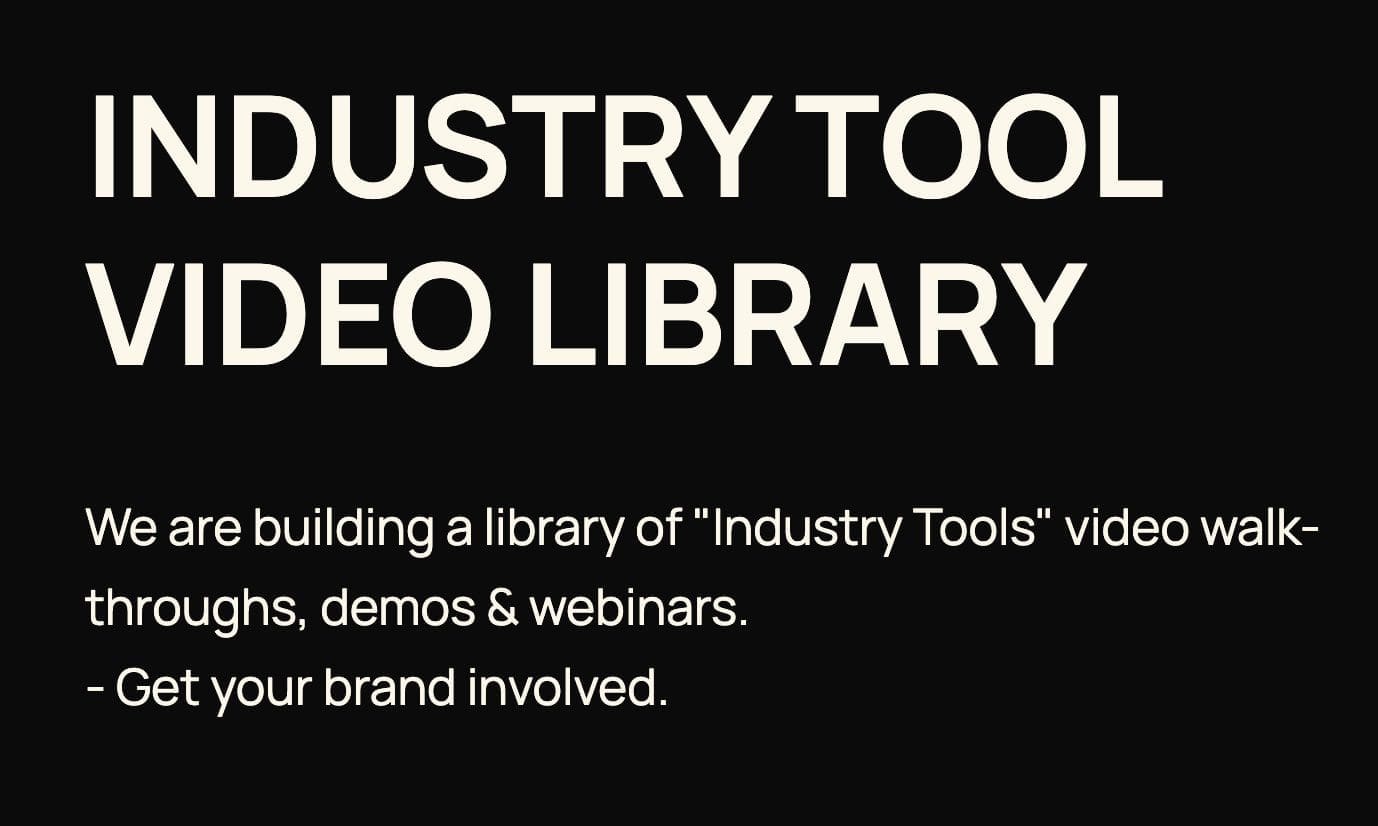AI Learning Centres:
- AI – Learn The Basics
- Get The Most From ChatGPT
- Branding in The Age of AI
- AI for Client Experience
- AI For Prospecting
- AI For Marketing
- AI For Listings & Ads
- Team Adoption of AI
- AI For PM
- AIO & Generative Search
- AI For Operations & Efficiency
- AI For Market Research & Analysis
- AI Ethics, Privacy & Compliance in Real Estate
Digital Marketing & Social Media Learning Centres:
Guides & Downloads

Measuring Email Success: Key Metrics Every Real Estate Agent Should Track
Email is one of the simplest ways to stay in front of sellers, buyers, investors, and landlords. When you measure the right numbers, you learn what to send, who to send it to, and when to send it. This guide explains the essential metrics, how to calculate them in plain language, and how to link them to real results like appraisals booked and listings won.
Why measuring email performance matters
It shows what content attracts enquiries, inspections, and appraisal requests
It helps you spend less time guessing and more time on what works
It proves the value of email to your team and to vendors who fund marketing
It protects your sender reputation so your messages land in the inbox, not in spam
The five levels of email success
Think of your email performance like a simple ladder. Each step leads to the next.
Deliver. Did your email reach the inbox
Open. Did your contact open it
Engage. Did they click or reply
Act. Did they book, enquire, register, or download
Grow. Did your list size and quality improve over time
Essential metrics and how to calculate them
Use simple counts from your email platform and calculator. Write each formula in words so anyone can follow.
Deliverability rate
What it is. The share of emails that reached inboxes
How to calculate. Delivered emails divided by emails sent, multiplied by one hundred
Aim for. Above ninety eight percent
Bounce rate
What it is. The share of emails that could not be delivered
Types. Hard bounces are invalid addresses, soft bounces are temporary issues
How to calculate. Bounced emails divided by emails sent, multiplied by one hundred
Aim for. Below one percent
Open rate
What it is. The share of people who opened your email
How to calculate. Unique opens divided by delivered emails, multiplied by one hundred
Aim for. Thirty five to fifty five percent for local property content
Click through rate
What it is. The share of delivered emails with at least one link click
How to calculate. Unique link clicks divided by delivered emails, multiplied by one hundred
Aim for. Three to ten percent
Click to open rate
What it is. The share of openers who clicked
How to calculate. Unique link clicks divided by unique opens, multiplied by one hundred
Aim for. Ten to twenty five percent
Reply rate
What it is. The share of delivered emails that receive a reply
How to calculate. Replies divided by delivered emails, multiplied by one hundred
Aim for. Zero point two to two percent, higher for plain text updates and personal invites
Conversion rate
What it is. The share of delivered emails that lead to the goal you set
Goals to track. Appraisal booking, market update request, open home registration, private inspection request, property report download, vendor meeting
How to calculate. Goal completions divided by delivered emails, multiplied by one hundred
Aim for. Zero point five to three percent for clear single call to action
Leads per one thousand emails sent
Why it helps. Normalises results across big and small lists
How to calculate. Number of qualified leads divided by emails sent, multiplied by one thousand
Use when. Comparing campaigns across months
Unsubscribe rate
What it is. The share of people who opt out
How to calculate. Unsubscribes divided by delivered emails, multiplied by one hundred
Aim for. Below zero point three percent
Spam complaint rate
What it is. The share of delivered emails marked as spam
How to calculate. Spam complaints divided by delivered emails, multiplied by one hundred
Aim for. Below zero point zero two percent
List growth rate
What it is. Net growth of your list each month
How to calculate. New subscribers less unsubscribes less hard bounces, divided by last month list size, multiplied by one hundred
Aim for. Three to ten percent monthly if you promote sign up forms and lead magnets
List churn
What it is. The share of your list that leaves or goes inactive
How to calculate. Unsubscribes plus hard bounces plus cold contacts, divided by list size, multiplied by one hundred
Aim for. Below two percent per month
Read time and top links
What it shows. How long people read and which links win the most clicks
Use it to. Shorten long emails, move prime links higher, and place main button above the fold
Device and client split
What it shows. Mobile versus desktop, Apple Mail versus Gmail, and more
Use it to. Design mobile first, keep buttons large, and test on real devices
Send time performance
What it shows. Which day and hour gets the best opens and clicks
Use it to. Build a simple rhythm, for example Tuesday mid morning or Thursday mid afternoon, then adjust
Benchmarks to guide your goals
Every list and area is different. Use these healthy ranges as a starting point, then set your own targets.
Deliverability above ninety eight percent
Bounce rate below one percent
Open rate between thirty five and fifty five percent
Click through rate between three and ten percent
Click to open rate between ten and twenty five percent
Reply rate between zero point two and two percent
Conversion rate between zero point five and three percent
Unsubscribe rate below zero point three percent
Spam complaint rate below zero point zero two percent
List growth between three and ten percent per month
Link email metrics to real outcomes
Numbers matter most when they lead to appointments and sales. Map each metric to a clear property outcome.
Appraisal bookings from email invites to a free market update
Listing presentations requested after a vendor education series
Open home registrations from new listing alerts
Private inspection requests from price change notices
Buyer enquiries from feature property spotlights
Landlord leads from vacancy reduction tips and case studies
Repeat business from anniversary check ins and sold story emails
Create one simple rule. Every campaign must have one main call to action that maps to one outcome.
Set up tracking the right way
Follow these steps once, then reuse the same structure for every send.
Define the single success action for the campaign, for example Book an appraisal
Build a landing page or form that captures name, mobile, email, and suburb
Add hidden fields to the form, for example Source equals Email, Campaign name equals Sept Vendor Series
Use booking links for appraisals so you can count completed bookings
Add UTM tags to every link, for example utm_source equals email, utm_medium equals newsletter, utm_campaign equals sept_vendor_series
Connect your email platform to your CRM so the source and campaign name flow through
Create a saved report in your CRM that shows Leads by Source equals Email and Campaign Name by week and month
Use a unique phone number on key landing pages if you need to capture phone calls as conversions
Confirm your unsubscribe link works and matches the Spam Act in Australia
Build your weekly and monthly scoreboard
Keep this simple and visible for your team.
Weekly scoreboard
Campaign name
Segment sent to
Delivered count and deliverability rate
Open rate
Click through rate and top three links
Replies and reply rate
Goal completions and conversion rate
Unsubscribes and unsubscribe rate
Notes on what worked
Monthly scoreboard
Total emails sent
Leads per one thousand emails sent
Appraisals booked from email
Listings won from email
Average open rate and trend arrow up or down
Average click through rate and trend arrow up or down
List growth rate and list churn
Revenue or gross commission linked to email sourced listings
A B testing made simple
Testing helps you learn faster without risk.
Test one thing at a time, for example subject line, hero image, or call to action button text
Split your audience into two equal groups
Pick a winner based on click to open rate and conversion rate, not open rate alone
Roll the winner to the remaining contacts in the segment next time
Keep a simple log of tests and results so you do not repeat old ideas
Quick wins to lift each metric
Lift deliverability
Remove invalid addresses and role emails such as info at or admin at
Use double opt in or a confirmation step for new sign ups
Send to engaged segments first, then warm the rest
Keep a steady send rhythm, not long gaps followed by a burst
Lift open rate
Use a clear sender name that people recognise
Write subject lines that promise one benefit, for example Your Spring Market Update for Carindale
Use preview text to add a second hook
Keep segments tight so the message feels local and personal
Lift clicks
Place one main button high in the email
Use short copy with scannable subheadings and bullet points
Add property cards with a single View listing button
Use text links as well as buttons for readers who prefer text
Lift conversions
Send to the right segment, for example homeowners in the last five years for a free market update
Use a distraction free landing page that matches the email message
Keep forms short, then nurture for extra details later
Add social proof such as recent sales and short vendor quotes
Reduce unsubscribes and complaints
Set a clear send frequency and tell people what they will receive
Add a preference centre so contacts can choose topics such as new listings, market updates, landlord tips
Remove cold contacts who have not opened in six months after a final re engagement note
Grow your list
Add sign up forms to your website header and footer
Offer useful downloads such as suburb reports and selling checklists
Capture emails at open homes with a simple tick to get new listing alerts
Add a tick box for market updates to all enquiry forms
Simple workbook items to copy into your system
Campaign naming
Use a pattern with underscores to keep names clean
Example. year_month_theme_audience, such as 2025_09_vendor_series_homeowners
UTM tags
Use the same tags every time so reports stay tidy
utm_source equals email
utm_medium equals newsletter or alert or invite
utm_campaign equals your campaign name pattern
CRM fields
Source equals Email
Campaign Name equals your campaign name
Goal equals Appraisal booking or Open home registration or Market update request
Example calculations with real numbers
You sent four thousand emails
One hundred soft bounces and twenty hard bounces
Three thousand eight hundred and eighty delivered
One thousand eight hundred opens
Three hundred unique link clicks
Thirty appraisal bookings
Now calculate.
Deliverability rate equals three thousand eight hundred and eighty divided by four thousand, multiplied by one hundred, which is ninety seven percent
Open rate equals one thousand eight hundred divided by three thousand eight hundred and eighty, multiplied by one hundred, which is forty six point four percent
Click through rate equals three hundred divided by three thousand eight hundred and eighty, multiplied by one hundred, which is seven point seven percent
Click to open rate equals three hundred divided by one thousand eight hundred, multiplied by one hundred, which is sixteen point seven percent
Conversion rate equals thirty divided by three thousand eight hundred and eighty, multiplied by one hundred, which is zero point eight percent
Leads per one thousand emails sent equals thirty divided by four thousand, multiplied by one thousand, which is seven point five
You can now compare these to your targets and decide what to improve next.
Troubleshooting guide
Low deliverability. Clean your list, confirm sign ups, reduce images, and avoid spammy words
Low open rate. Test sender name and subject line, improve preview text, tighten the segment
Low click rate. Move the main button higher, simplify the message, and add a clear benefit
Low conversion rate. Fix the landing page, shorten the form, and match the message to the page
High unsubscribes. Reduce frequency, split by interest, and improve expectations on the sign up page
Your checklist
One campaign, one clear goal
A named segment that matches the goal
Links with UTM tags and a matching landing page
A working unsubscribe link and clear permission
Scoreboard updated weekly and monthly
A short note on what to repeat and what to test next
Measure these numbers, improve a little each week, and you will turn every send into more conversations, more appointments, and more listings.
Author Ken Hobson






